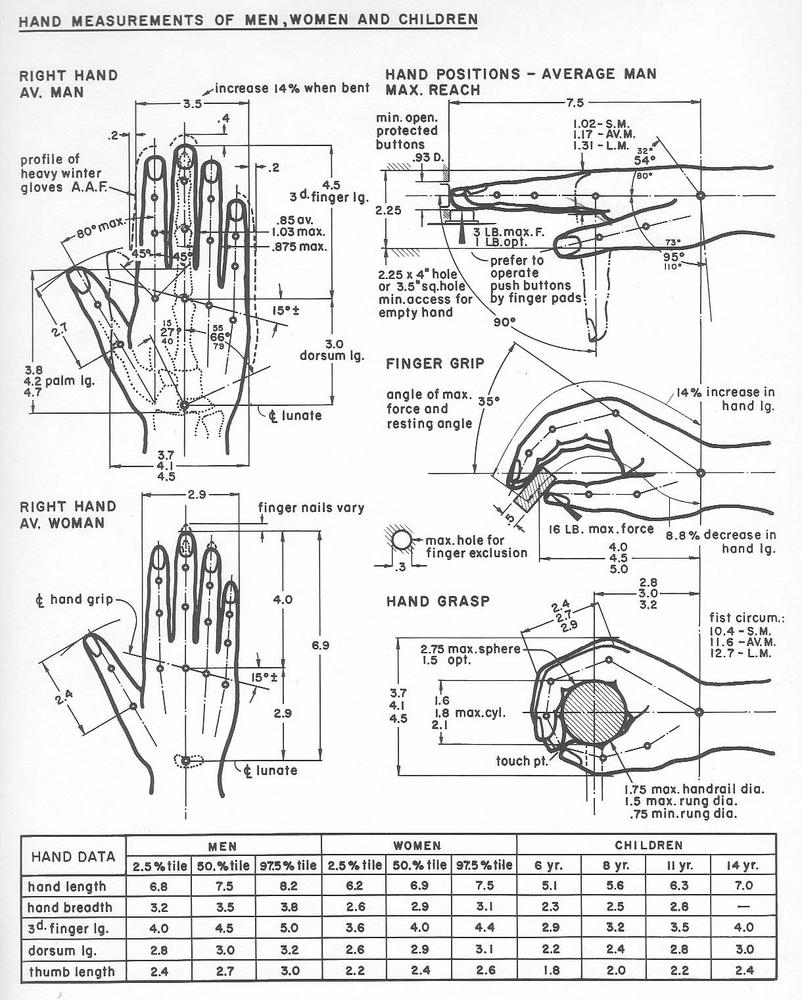THE ERGONOMICS OF INTERACTIVE GESTURES
With gestural interfaces, key issues regarding the body must be considered when designing the interface itself and the accompanying interactive gestures that control it.

Figure 2-7. Hand data from Henry Dreyfuss's book, Designing for People. Dreyfuss created these composite figures from his research and experience with human physiology. Knowing such information helped Dreyfuss (and countless other industrial designers) to design everything from tanks to telephones. Courtesy Allworth Press.
HUMAN FACTORS
In 1955, Henry Dreyfuss wrote a seminal book on industrial design called Designing for People (Allworth Press). In it, as well as in a book he coauthored with Alvin R. Tilley, The Measure of Man and Woman: Human Factors in Design (Wiley), Dreyfuss demonstrated how the human body should be considered when designing products. To do so, he created two composite "people," Joe and Josephine, who illustrated the common dimensions of human physiology.
Designers need to be aware of the limits of the human body when creating interfaces that are controlled by it. The simple rule of thumb (pun intended) is this:
Note
The more complicated the gesture, the fewer the people who will be able to perform it.
Almost anyone (see DESIGNING TOUCH TARGETS later in this chapter) can tap a button on a touchscreen. But not everyone is going to be able to wave her left hand while ...
Get Designing Gestural Interfaces now with the O’Reilly learning platform.
O’Reilly members experience books, live events, courses curated by job role, and more from O’Reilly and nearly 200 top publishers.

